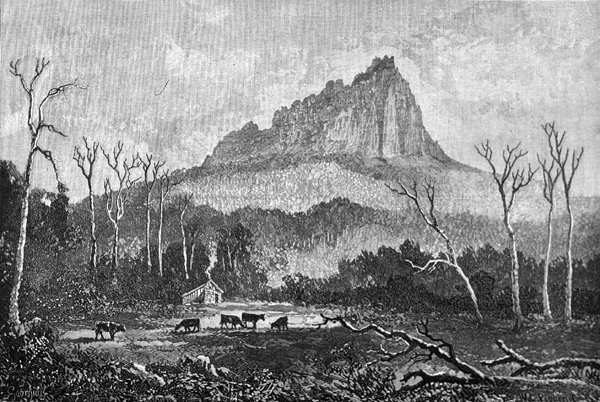 |
 |
|
Wild Cattle
Wild Cattle in colonial history were credited with being 'discoverers' of significant pastoral areas such as 'New Country' around Marlborough, Lake Echo area and Kentish Plains. Relatively confined settled areas, the absence of fences, seldom-enforced land regulations such as tickets of occupation, and close links between the convict workforce and bushrangers allowed herds of cattle to roam unchecked and breed in significant numbers. Wild cattle frequented remote areas, highland and lowland, and persisted in some cases, such as Middlesex and Pelion Plains, until the late 1930s. Attempts to control them resulted in bitter dispute between settlers and government. Round-ups were significant in reflecting the development of a tradition of fearless and dashing horsemen, among the best in Tasmania. To the forefront were stockmen working for Edward Lord, and William Field and sons. Important in contemporary politics is the Mountain Cattlemen's Association's claim to be heirs to this tradition in their campaign to maintain some high country leases. Further reading: Dr Ross, 'Recollections of a short excursion to Lake Echo in March 1828', Hobart Town Almanack, 1830; W Senior, Travel and trout in the antipodes, Melbourne, 1880; L Meredith, My home in Tasmania, London, 1852. Tim Jetson |
Copyright 2006, Centre for Tasmanian Historical Studies |
